Tucked away among green acres of immense parkland, Borghese Gallery suddenly appears.
One of the city's most famous museums, it is a triumph of art and beauty like few other places in the world.
We deeply love Galleria Borghese, as it is called in Italian: walking through its halls means that one's gaze, and one's heart, is constantly immersed in pure wonder. Works by Canova, Reni, but especially Bernini and Caravaggio.
Paintings and statues are beautifully arranged inside the museum, and once the visit is over, one would like nothing more than to begin it again.
So let's find out more about the famous Borghese Gallery starting with its history, which began about 500 years ago.

The fascinating history of the Borghese Gallery
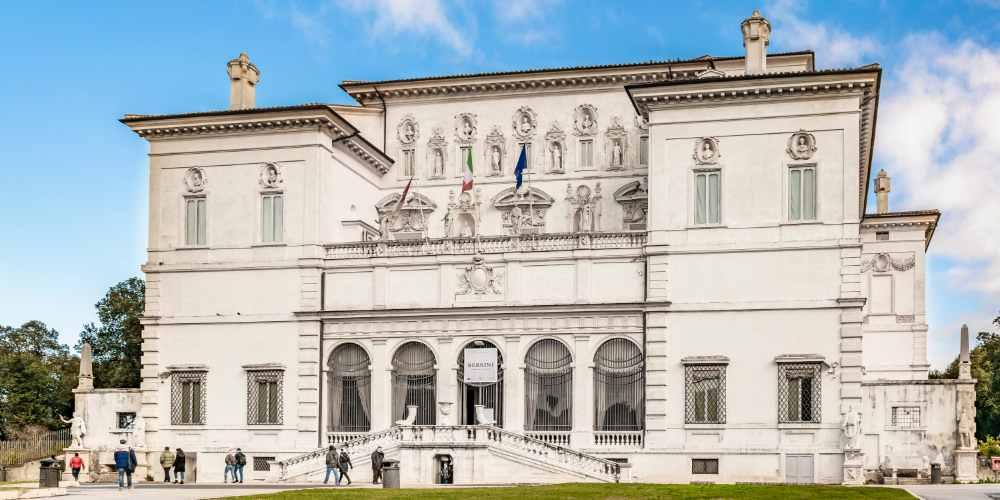
The exteriors of Villa Borghese Pinciana, which hosts the splendid collection of Galleria Borghese
It all began at Villa Borghese, the immense park located just off Porta Pinciana. The land was purchased in the 16th century by the Borghese family, coming from Siena. In the early seventeenth century, when the family began to become important in Rome as well, they began work on the construction of a villa within the park.
The architecture of the villa took inspiration from Villa della Farnesina and Villa Medici, while the interiors were inspired by 16th-century art. Numerous frescoes were added later, intended to show visitors the history of the family in an undoubtedly epic key.
The transformation of the elegant villa into the present museum did not take place until the early twentieth century. For many, it was the bargain of the century: the Italian state, in fact, managed to buy the villa, the park and all its spectacular works of art for the modest sum of 3 million and 600 thousand liras (at today's exchange rate this would be just over 16 thousand euros!).
An opportunity more unique than rare.
Visit the masterpieces of Borghese GalleryWhat to visit inside the museum
There are 20 Halls in Borghese Gallery, divided between the ground floor and the second floor.
Each room is not only identified by a very evocative name (the Hall of Fame, the Hall of the Bacchae or the Hall of the Emperors, for example), but they also follow a specific theme.
Finally, on the third floor are the Deposits. This is a picture gallery consisting of about 260 artworks that do not find a place in the rooms below. The visit to the third floor does not follow the visiting hours of the rest of the museum: if you wish to visit it, therefore, you should inquire in advance.
The most important works of Borghese Gallery
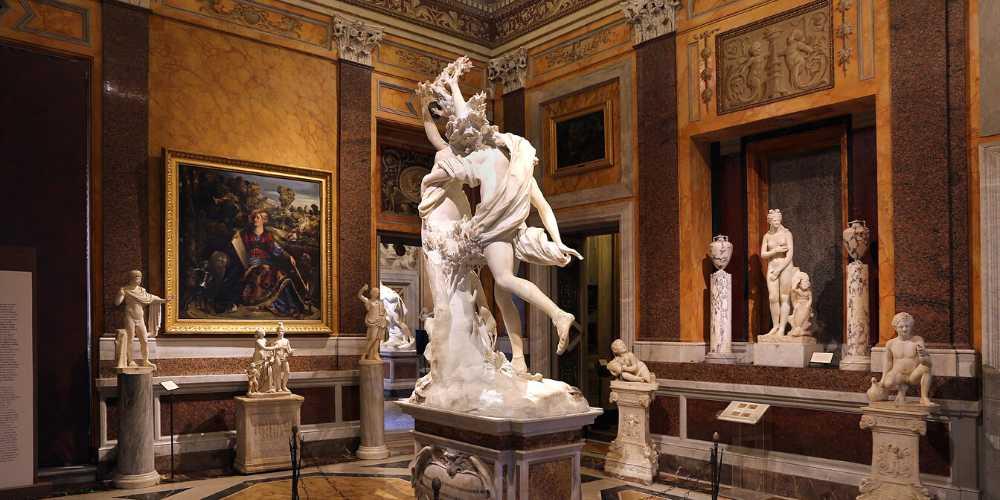
The third Hall, dedicated to "Apollo and Daphne" (photo by Sailko, CC BY 3.0, via Wikimedia Commons)
Masterpieces by Caravaggio, Titian and Guido Reni, but also extraordinary sculptures by Canova and Bernini. Works by both famous and lesser-known artists accompany visitors to Galleria Borghese to discover the museum's immense heritage.
In this section of the article, we collect 5 works that in our opinion are the most significant in the entire Gallery (a choice that, we admit, was not easy).
5. Pauline Bonaparte as Venus Victrix
This sculpture by Canova is certainly among the most famous in the entire museum. The sister of Napoleon I, second wife of Camillus II Borghese, is depicted as in the guise of a modern Aphrodite winning the apple of the most beautiful of all goddesses, thanks to Paris.
The statue is located in Room I, called, in fact, Pauline.
4. Apollo and Daphne
This work by Bernini is certainly one of the most breathtaking works inside the museum. The dynamism of this sculpture is palpable, and the eye cannot help but move tirelessly between the supple features of the nymph and the body of the god.
The masterful work is located in Room III, dedicated to Apollo and Daphne.
3. Sacred and Profane Love
This time we are enchanted by a 16th-century painting by Titian.
The two female figures depicted here are the allegory of the two faces of love, the sacred and the profane. To tell the truth, however, looking at this canvas and all its classical symbols and references has made scholars and enthusiasts ponder for centuries the true meaning of the work.
The work is on display in Room XX, dedicated to Psyche.
2. David with the Head of Goliath
This is one of Caravaggio's last works. Instead of being represented as a hero, David is depicted as tormented and compassionate. What leaves the viewer even more breathless is the fact that Goliath's face is a self-portrait of the artist himself.
The canvas is located in Room VIII, known as the Silenus Room.
1. The Rape of Proserpina
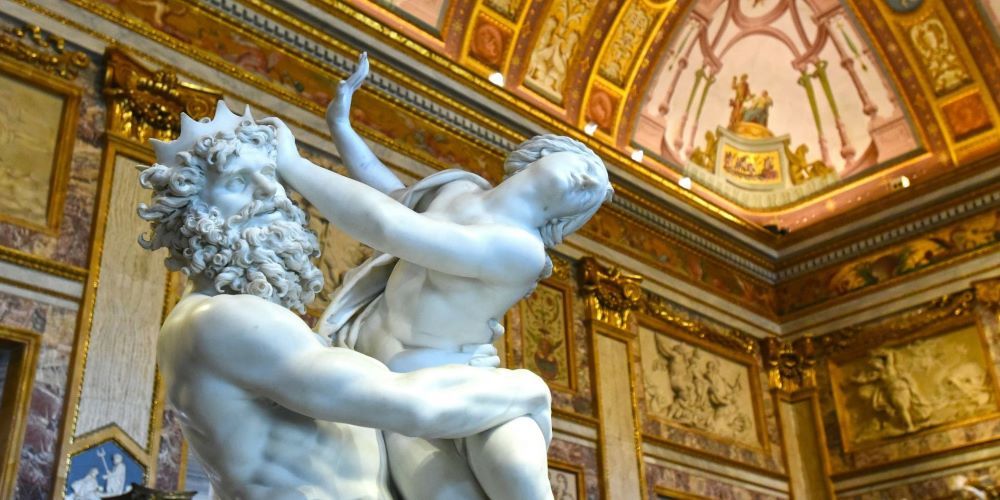
We can only complete this quick tour of the works in the Galleria Borghese museum with this magnificent sculpture by Bernini. The tension, dynamism, and intensity of feeling that binds and at the same time distances the work's two protagonists, Hades and Proserpine, are tangible. The eye cannot help but be dazzled by the fingers sinking into flesh and the muscular tension that envelops the bodies in the scene.
Without a doubt, this is the most catalyzing work in Room IV, known as the Emperors' Room.
Galleria Borghese a Roma
Where it is located and how to get Borghese Gallery
The museum is located in the heart of Rome, in Piazzale Scipione Borghese. If you are walking around Via Veneto, Trinità dei Monti or Piazza del Popolo, you can consider walking there (about 1.5 km).
If you are arriving by metro, the nearest stations are certainly Barberini, Spagna and Flaminio.
By bus, on the other hand, you can get right next door (Pinciana / Museo Borghese stop). The lines to consider are 52, 53 and 83.
From Termini station, it is advisable to take lines 92 or 910 and get off at the above-mentioned stop.
How to book a visit to the Gallery: info and tickets
One of the most beautiful museums you can see in Italy's capital is undoubtedly this one.
To fully enjoy the visit, however, it is essential to book your admission in advance. It is no longer possible to visit Galleria Borghese without a reservation.
A full ticket costs 15 euros, to which the presale fee must be added. Discounts are allowed for minors and young people under 25.
Tickets can be purchased online or by phone.
Our tips for visiting the museum
This is a truly breathtaking museum. The wonder of the halls and the splendor of the works together create a path of beauty and meaning that you will find hard to forget.
For this reason, we suggest that you spend at least 2 hours visiting the museum. In our opinion, it is essential to explore the works in your own time and, where possible, to go back and catch that detail that you did not catch the first time.
Also, and this is a rule of the museum, do not take bulky bags or backpacks with you. The works are not protected by display cases, and you will be able to walk freely through a kind of garden of statues and paintings. The effect will be even more immersive, but it is definitely worth the extra caution. If that is not possible, however, the museum has a checkroom at the entrance.
Very few upgrades, however, will allow you to better appreciate the museum's splendor.
Of course, don't forget to make reservations in advance!
About the author
Written on 29/12/2022

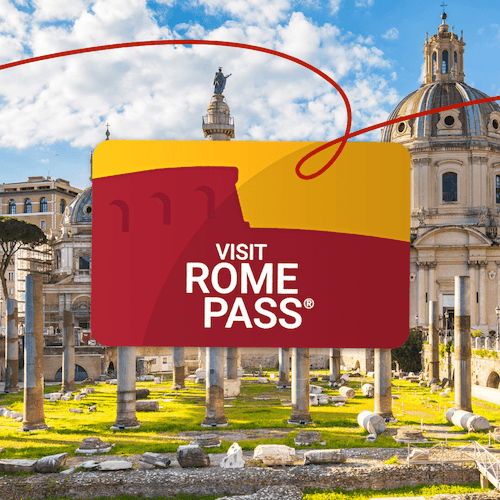
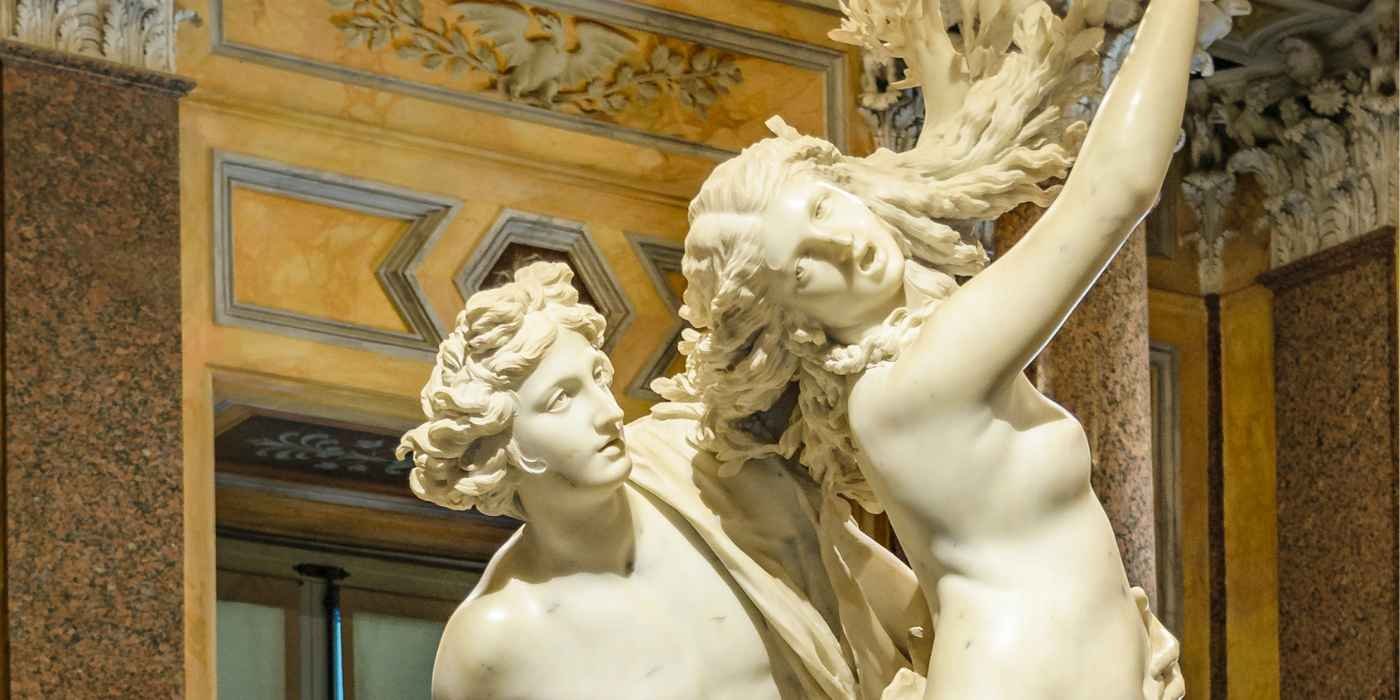
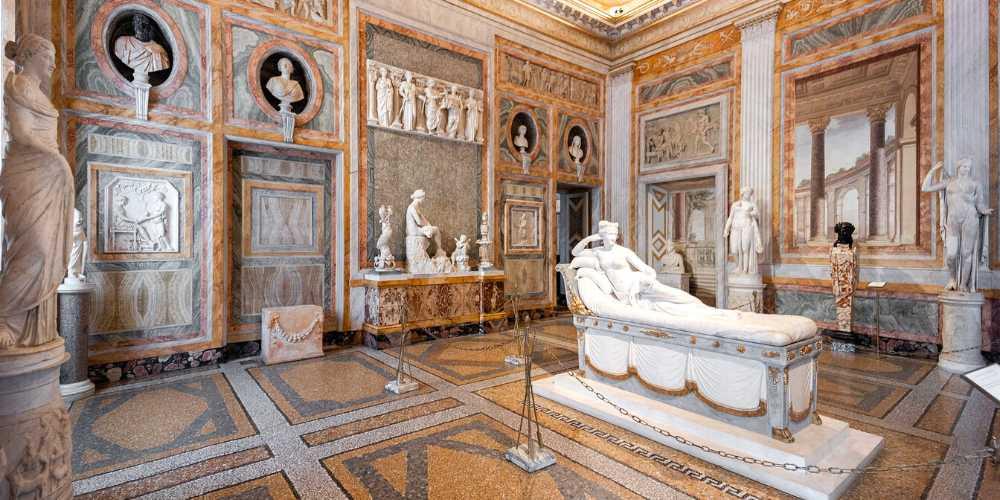
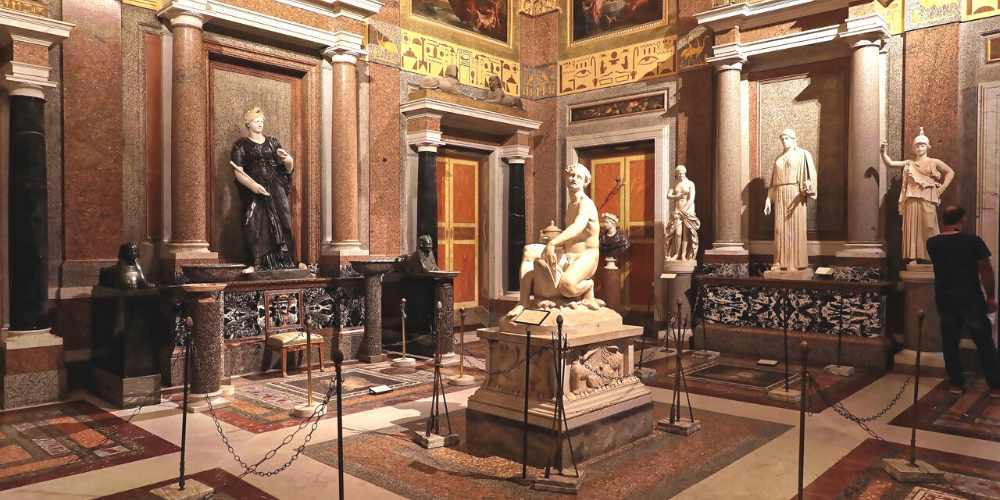
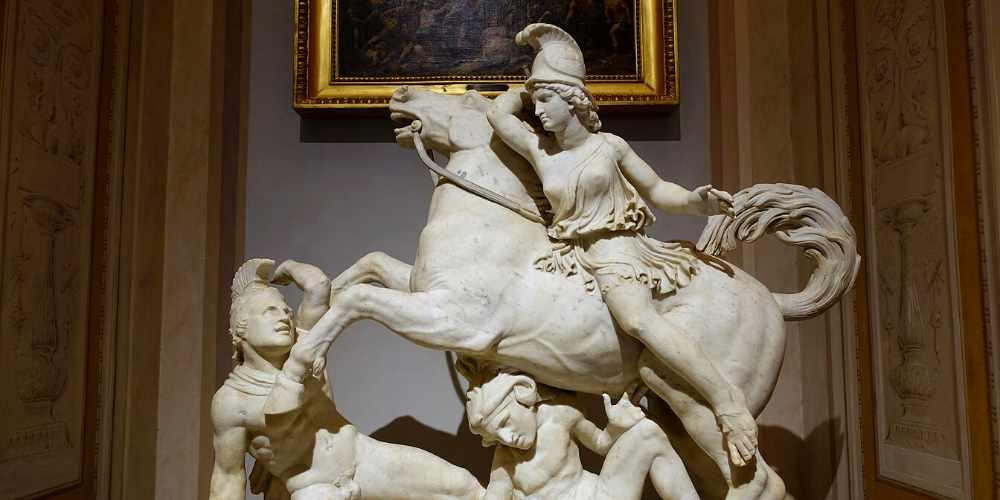

Elisa Borgato
Discover the immense artwork collection of the Borghese Gallery in the heart of Rome. Bernini, Caravaggio, Canova: they are all here, waiting for you.